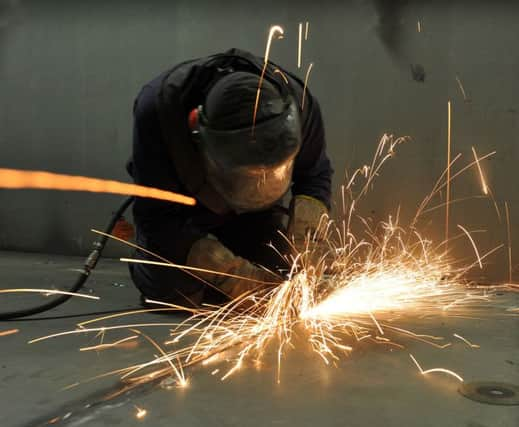Royal Navy is cannabalising thousands more parts to fix fleet, report says


The National Audit Office has warned that thousands more parts are being stripped from ships to refit other vessels now than five years ago.
It comes as the Ministry of Defence continues to face a squeeze on its budgets in a bid to fill a £30bn defence black hole.
Advertisement
Hide AdAdvertisement
Hide AdOn the defensive, the navy has stressed that only a tiny fraction of the total parts it uses to maintain its fleet are taken from other vessels.
And Senior Service officials said a new £1bn support model was set to shake-up the way the force managed spares and repairs.
But the NAO warned cannibalising equipment can have a detrimental impact on the fleet, adding: ‘Each instance of equipment cannibalisation can delay programmes, create additional engineering risks and add to the work of staff, affecting morale.’
Between April 2012 and March 2017 there were 3,230 instances involving 6,378 parts, with 795 instances in 2016-17 alone — the equivalent of 66 a month, up from 30 a month in 2005.
Advertisement
Hide AdAdvertisement
Hide AdThe NAO’s report showed 71 per cent of parts cannibalised ‘on the basis of operational need’ were of ‘low value’, but the cost of moving the parts ‘could be much greater’.
It added the majority of re-used parts cost less than £5,000, with less than one per cent valued at more than £500,000.
The organisation also noted that in some circumstances, such as during high-intensity operations, cannibalisation can be the most effective way to keep vessels at sea.
But it can also lead to increased costs – in 50 per cent of cases on Type 23 frigates, six of which are based in Portsmouth, the expense of moving equipment was equal to or greater than the value of the part – and risks causing damage or disruption.
Advertisement
Hide AdAdvertisement
Hide Ad‘The risk of cannibalisation has increased further with reductions in fleet sizes meaning the armed forces have limited alternative equipment to deploy,’ the report said.
‘An estimated 11 per cent of the parts recorded by ships as having shortcomings in their material, design or documentation were cannibalised.’
The spending watchdog added the lack of spare gear had a ‘demoralising effect’ on personnel and was a ‘risk’ to operational capability.
Responding to the investigation, a navy spokesman said: ‘Less than half a per cent of parts we use come from swapping components, and we only do this when it’s absolutely necessary to get ships out of port and back onto operations more quickly.
‘We continue to make improvements to how we manage this long-established practice.’